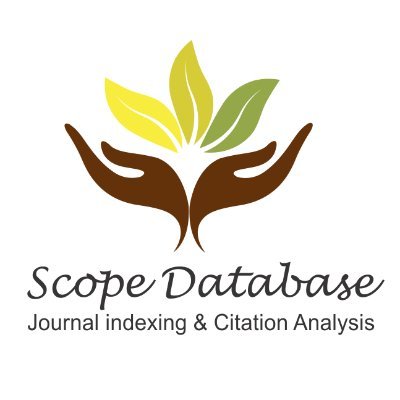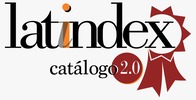Un modelo de ecuaciones estructurales para describir las relaciones entre recursos sociales, estresores y síntomas durante los tiempos del COVID-19
DOI:
https://doi.org/10.32654/CONCIENCIAEPG.7-1.8Palabras clave:
Estresores vitales; Recursos sociales; Conflictos trabajo; familia y familia-trabajo; Estrés por pandemia; Depresión y ansiedad; Modelo de ecuaciones estructuralesResumen
El Covid-19 no sólo es una enfermedad contagiosa, sino el causante del así llamado estrés por pandemia. Además, la cuarentena obligatoria que se impuso con el fin de disminuir el riesgo de contagio modificó la cotidianidad de las personas, diluyendo así los límites entre las rutinas familiares y laborales. Con el objetivo de determinar las relaciones entre los estresores vitales, la sintomatología depresiva y ansiosa, y los efectos amortiguadores de los recursos sociales, se utilizó un modelo de ecuaciones estructurales para realizar un análisis de sendero. Por Internet, se recolectó una muestra argentina de 637 individuos, de los cuales 182 cumplían con los requisitos de inclusión que comprendían estar con una pareja formal, estar conviviendo con hijos y encontrarse trabajando. Se determinó que la pareja como recurso consistió en el principal factor que puede reducir el riesgo de que se desarrollen síntomas depresivos y/o ansiosos. Los estresores de la pandemia y los hijos como estresores tienen las asociaciones más considerables con la ansiedad y, por otro lado, las siguientes variables tienen las correlaciones más destacadas con la depresión: la pareja como estresor, los conflictos familia-trabajo y los estresores de la pandemia.
Se concluye que, aunque los estresores de la pandemia están significativamente correlacionados con la depresión y ansiedad, la pareja consiste en la variable clave por sus asociaciones con los síntomas analizados en el presente estudio.
Descargas
Citas
Altena, E., Baglioni, C., Espie, C. A., Ellis, J., Gavriloff, D., Holzinger, B., … Riemann, D. (2020). Dealing with sleep problems during home confinement due to the COVID‐19 outbreak: Practical recommendations from a task force of the European CBT‐I Academy. Journal of Sleep Research, 29(4), 170–173. https://doi.org/10.1111/jsr.13052
Bellavia, G. M., & Frone, M. K. (2005). Work-Family Conflict. In J. Barling, E. K. Kelloway, & M. R. Frone (Eds.), Handbook of Work Stress (pp. 113–148). SAGE Publications, Inc. https://doi.org/10.4135/9781412975995.n6
Billings, A. G., & Moos, R. H. (1981). The role of coping responses and social resources in attenuating the stress of life events. Journal of Behavioral Medicine, 4(2), 139–157. https://doi.org/10.1007/BF00844267
Bolger, N., DeLongis, A., Kessler, R. C., & Wethington, E. (1989). The Contagion of Stress across Multiple Roles. Journal of Marriage and the Family, 51(1), 175–183. https://doi.org/10.2307/352378
Byrne, B. M. (2016). Structural Equation Modeling with AMOS. Routledge. https://doi.org/10.4324/9781315757421
Caccia, P. A., De Grandis, M. C., & Pérez, G. (n.d.). Somatizaciones y Apoyo Social Funcional percibido en el contexto de Aislamiento Social Preventivo y Obligatorio por Covid-19, en Buenos Aires, Argentina. Revista de Psicología UNEMI.
Caccia, P. A., De Grandis, M. C., & Schetsche, C. (2021). Validación del Inventario SISCO del Estrés de Pandemia (ISEP) en población de Buenos Aires, Argentina. PSIENCIA. Revista Latinoamericana de Ciencia Psicológica, 13(1), 28–40. Retrieved from http://www.psiencia.com/index.php/revista/article/view/1
Chen, F. F. (2007). Sensitivity of Goodness of Fit Indexes to Lack of Measurement Invariance. Structural Equation Modeling: A Multidisciplinary Journal, 14(3), 464–504. https://doi.org/10.1080/10705510701301834
Core Team. (2020). R: A language and environment for statistical computing. Vienna, Austria. https://www.r-project.org/
Costello, A., & Osborne, J. (2005). Best practices in exploratory factor analysis: Four recommendations for getting the most from your analysis. Practical Assessment, Research, and Evaluation, 10(7), 1–9. https://doi.org/10.7275/jyj1-4868
Daniels, D., & Moos, R. H. (1990). Assessing Life Stressors and Social Resources among Adolescents. Journal of Adolescent Research, 5(3), 268–289. https://doi.org/10.1177/074355489053002
Dierdorff, E. C., & Ellington, J. K. (2008). It’s the nature of the work: Examining behavior-based sources of work-family conflict across occupations. Journal of Applied Psychology, 93(4), 883–892. https://doi.org/10.1037/0021-9010.93.4.883
Dunn, T. J., Baguley, T., & Brunsden, V. (2014). From alpha to omega: A practical solution to the pervasive problem of internal consistency estimation. British Journal of Psychology, 105(3), 399–412. https://doi.org/10.1111/bjop.12046
Fabrigar, L. R., Wegener, D. T., MacCallum, R. C., & Strahan, E. J. (1999). Evaluating the use of exploratory factor analysis in psychological research. Psychological Methods, 4(3), 272–299. https://doi.org/10.1037/1082-989X.4.3.272
Fu, C. K., & Shaffer, M. A. (2001). The tug of work and family. Personnel Review, 30(5), 502–522. https://doi.org/10.1108/EUM0000000005936
Girmay, M., & Singh, G. K. (2019). Social Isolation, Loneliness, and Mental and Emotional Well-being among International Students in the United States. International Journal of Translational Medical Research and Public Health, 3(2), 75–82. https://doi.org/10.21106/ijtmrph.82
Grandey, A. A., & Cropanzano, R. (1999). The Conservation of Resources Model Applied to Work–Family Conflict and Strain. Journal of Vocational Behavior, 54(2), 350–370. https://doi.org/10.1006/jvbe.1998.1666
Grzywacz, J. G., & Bass, B. L. (2003). Work, Family, and Mental Health: Testing Different Models of Work-Family Fit. Journal of Marriage and Family, 65(1), 248–261. https://doi.org/10.1111/j.1741-3737.2003.00248.x
Gutek, B. A., Searle, S., & Klepa, L. (1991). Rational versus gender role explanations for work-family conflict. Journal of Applied Psychology, 76(4), 560–568. https://doi.org/10.1037/0021-9010.76.4.560
Heinze, G., Wallisch, C., & Dunkler, D. (2018). Variable selection - A review and recommendations for the practicing statistician. Biometrical Journal, 60(3), 431–449. https://doi.org/10.1002/bimj.201700067
Hinton, P., McMurray, I., & Brownlow, C. (2014). SPSS Explained (2nd ed.). New York: Routledge. https://doi.org/10.4324/9781315797298
Hofmann, R. J. (1978). Complexity And Simplicity As Objective Indices Descriptive Of Factor Solutions. Multivariate Behavioral Research, 13(2), 247–250. https://doi.org/10.1207/s15327906mbr1302_9
Hoyle, R. H., & Gottfredson, N. C. (2015). Sample Size Considerations in Prevention Research Applications of Multilevel Modeling and Structural Equation Modeling. Prevention Science, 16(7), 987–996. https://doi.org/10.1007/s11121-014-0489-8
Hu, L., & Bentler, P. M. (1999). Cutoff criteria for fit indexes in covariance structure analysis: Conventional criteria versus new alternatives. Structural Equation Modeling: A Multidisciplinary Journal, 6(1), 1–55. https://doi.org/10.1080/10705519909540118
Huarcaya-Victoria, J. (2020). Consideraciones sobre la salud mental en la pandemia de COVID-19. Revista Peruana de Medicina Experimental y Salud Pública, 37(2), 327–340. https://doi.org/10.17843/rpmesp.2020.372.5419
Huremović, D. (2019). Psychiatry of Pandemics (D. Huremović, Ed.). Cham: Springer International Publishing. https://doi.org/10.1007/978-3-030-15346-5
Johnson, M. C., Saletti-Cuesta, L., & Tumas, N. (2020). Emociones, preocupaciones y reflexiones frente a la pandemia del COVID-19 en Argentina. Ciência & Saúde Coletiva, 25(suppl 1), 2447–2456. https://doi.org/10.1590/1413-81232020256.1.10472020
Keizer, R., Dykstra, P. A., & Poortman, A.-R. (2010). The transition to parenthood and well-being: The impact of partner status and work hour transitions. Journal of Family Psychology, 24(4), 429–438. https://doi.org/10.1037/a0020414
Kiecolt, K. J., Blieszner, R., & Savla, J. (2011). Long-Term Influences of Intergenerational Ambivalence on Midlife Parents’ Psychological Well-being. Journal of Marriage and Family, 73(2), 369–382. https://doi.org/10.1111/j.1741-3737.2010.00812.x
Kline, R. B. (2015). Principles and practice of structural equation modeling (4th ed.). The Guilford Press.
Korkmaz, S., Goksuluk, D., & Zararsiz, G. (2014). MVN: An R Package for Assessing Multivariate Normality. The R Journal, 6(2), 151–162. https://doi.org/10.32614/RJ-2014-031
Liu, C. H., & Doan, S. N. (2020). Psychosocial Stress Contagion in Children and Families During the COVID-19 Pandemic. Clinical Pediatrics, 59(9–10), 853–855. https://doi.org/10.1177/0009922820927044
Luk, D. M., & Shaffer, M. A. (2005). Work and family domain stressors and support: Within- and cross-domain influences on work-family conflict. Journal of Occupational and Organizational Psychology, 78(4), 489–508. https://doi.org/10.1348/096317905X26741
Macías, A. B. (2020). El estrés de pandemia (COVID 19) en población mexicana (P. E. Ceceñas Torrero, Ed.). Durango: Centro de Estudios Clínica e Investigación Psicoanalítica S.C.
Mardia, K. V. (1970). Measures of multivariate skewness and kurtosis with applications. Biometrika, 57(3), 519–530. https://doi.org/10.1093/biomet/57.3.519
Marsh, H. W., Hau, K.-T., & Wen, Z. (2004). In Search of Golden Rules: Comment on Hypothesis-Testing Approaches to Setting Cutoff Values for Fit Indexes and Dangers in Overgeneralizing Hu and Bentler’s (1999) Findings. Structural Equation Modeling: A Multidisciplinary Journal, 11(3), 320–341. https://doi.org/10.1207/s15328007sem1103_2
Martín, F. A., & Fernández, M. P. (1978). “Path” análisis, modelos de ecuaciones estructurales y variables no observadas. Reis, 3(3), 187–208. https://doi.org/10.2307/40182715
Mikulic, I. M. (1998). La evaluación psicológica de los recursos sociales y los estresores de vida. Aportes del inventario LISRES. Sainte Claire Editora.
Netemeyer, R. G., Boles, J. S., & McMurrian, R. (1996). Development and validation of work-family conflict and family-work conflict scales. Journal of Applied Psychology, 81(4), 400–410. https://doi.org/10.1037/0021-9010.81.4.400
Nomaguchi, K. M. (2009). Change in Work-Family Conflict Among Employed Parents Between 1977 and 1997. Journal of Marriage and Family, 71(1), 15–32. https://doi.org/10.1111/j.1741-3737.2008.00577.x
OMS. (2019). Nuevo coronavirus 2019. Organización Mundial de la Salud. https://www.who.int/es/emergencies/diseases/novel-coronavirus-2019
Parasuraman, S., & Simmers, C. A. (2001). Type of employment, work-family conflict and well-being: a comparative study. Journal of Organizational Behavior, 22(5), 551–568. https://doi.org/10.1002/job.102
Pereira, M. G. S., & Galaz, M. M. F. (2005). Estrés, respuestas de afrontamiento e ideación suicida en adolescentes. Psicología y Salud, 15(2), 221–230.
Peterson, R. A., & Cavanaugh, J. E. (2020). Ordered quantile normalization: a semiparametric transformation built for the cross-validation era. Journal of Applied Statistics, 47(13–15), 2312–2327. https://doi.org/10.1080/02664763.2019.1630372
Ramírez-Ortiz, J., Castro-Quintero, D., Lerma-Córdoba, C., Yela-Ceballos, F., & Escobar-Córdoba, F. (2020). Mental health consequences of the COVID-19 pandemic associated with social isolation. Colombian Journal of Anesthesiology, 48(4), 2–8. https://doi.org/10.5554/22562087.e930
Raykov, T., & Marcoulides, G. A. (2006). A first course in structural equation modeling (2nd ed.). Lawrence Erlbaum Associates.
Revelle, W. (2019). psych: Procedures for personality and psychological research. https://cran.r-project.org/package=psych Version = 1.9.12
Rosseel, Y. (2012). lavaan: An R Package for Structural Equation Modeling. Journal of Statistical Software, 48(2), 1–36. https://doi.org/10.18637/jss.v048.i02
Sandhya, S. (2009). The Social Context of Marital Happiness in Urban Indian Couples: Interplay of Intimacy and Conflict. Journal of Marital and Family Therapy, 35(1), 74–96. https://doi.org/10.1111/j.1752-0606.2008.00103.x
Sandín, B., Valiente, R. M., Chorot, P., Santed, M. A., & Lostao, L. (2008). SA-45: forma abreviada del SCL-90. Psicothema, 20(2), 290–296.
Saris, W. E., Satorra, A., & van der Veld, W. M. (2009). Testing Structural Equation Models or Detection of Misspecifications? Structural Equation Modeling: A Multidisciplinary Journal, 16(4), 561–582. https://doi.org/10.1080/10705510903203433
Schetsche, C., Caccia, P. A., Simaes, A. C., Mancini, N. A., Gómez, F. N., Kusmuk, M. N., … Elgier, A. M. (n.d.). Traducción y validación de las Work-Family Conflict and Family-Work Conflict Scales.
Shigemura, J., Ursano, R. J., Morganstein, J. C., Kurosawa, M., & Benedek, D. M. (2020). Public responses to the novel 2019 coronavirus (2019‐nCoV) in Japan: Mental health consequences and target populations. Psychiatry and Clinical Neurosciences, 74(4), 281–282. https://doi.org/10.1111/pcn.12988
Spinelli, M., Lionetti, F., Setti, A., & Fasolo, M. (2020). Parenting Stress During the COVID‐19 Outbreak: Socioeconomic and Environmental Risk Factors and Implications for Children Emotion Regulation. Family Process, 1–15. https://doi.org/10.1111/famp.12601
Urzúa, A., Vera-Villarroel, P., Caqueo-Urízar, A., & Polanco-Carrasco, R. (2020). La Psicología en la prevención y manejo del COVID-19. Aportes desde la evidencia inicial. Terapia Psicológica, 38(1), 103–118. https://doi.org/10.4067/S0718-48082020000100103
Vera-Villarroel, P., Pavez, P., Celis-Atenas, K., & Díaz-Pardo, N. (2013). Fuentes de apoyo emocional y su relación con el bienestar subjetivo: Un análisis preliminar. Revista Mexicana de Psicología, 30(2), 115–122.
Yeo, I.-K., & Johnson, R. A. (2000). A new family of power transformations to improve normality or symmetry. Biometrika, 87(4), 954–959. https://doi.org/10.1093/biomet/87.4.954
Yu, C.-Y. (2002). Evaluating cutoff criteria of model fit indices for latent variable models with binary and continuous outcomes. University of California, Los Angeles Los Angeles, CA.
Zhang, J., Liu, Y., & Liu, Y. (2010). Antecedents of Work-Family Conflict: Review and Prospect. International Journal of Business and Management, 6(1), 98–103. https://doi.org/10.5539/ijbm.v6n1p89.
Descargas
Publicado
Cómo citar
Número
Sección
Licencia
Derechos de autor 2022 Revista ConCiencia EPG

Esta obra está bajo una licencia internacional Creative Commons Atribución-NoComercial 4.0.



























